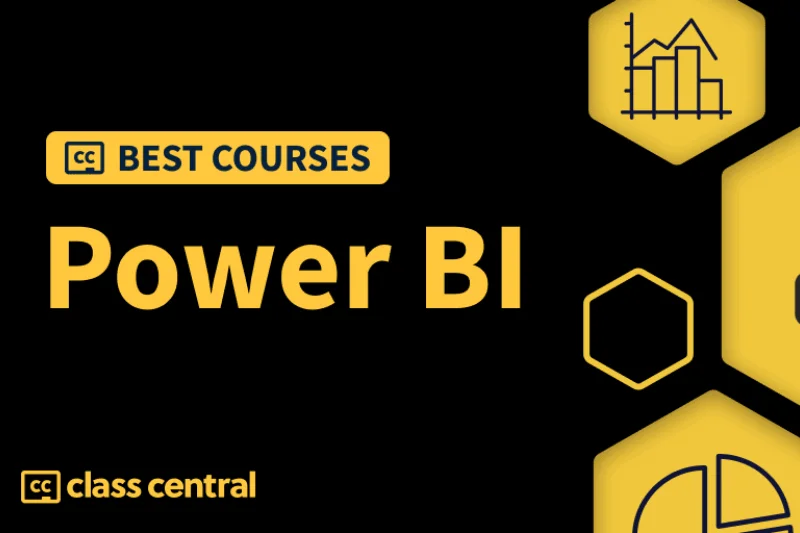Introduction to Power BI and its capabilities
Power BI is a business intelligence and data visualisation tool developed by Microsoft. It allows users to connect to various data sources, transform and clean the data, create interactive visualisations, and share the insights through dashboards and reports. Power BI is designed to help organizations make data-driven decisions by providing easy-to-use tools for data analysis and visualisation.
Power BI offers a wide range of features and capabilities to help organisations analyse data, create stunning visualisations, and share insights with colleagues. However, in order to get the most out of Power BI, it is important to understand the various features and capabilities that it offers. Power courses are offered by the DataCamp online platform through the website Neonpolice.
Power Bi course

Power Bi course | Neonpolice
A Power BI course can help organizations understand the basics of using Power BI and leverage its features to their advantage. A comprehensive Power BI course should cover the following topics:
- Introduction to Power BI: This section should provide an overview of Power BI, the various features that it offers, and the benefits of using it.
- Data Connections: This section should explain how to connect to various data sources and prepare data for analysis.
- Visualisations: This section should discuss the various visualisation options available in Power BI and
The target audience for the Power Bi course
The target audience for a Power BI course could be business professionals, data analysts, or anyone interested in data visualisation and analysis. Business professionals such as managers, executives, and analysts can benefit from using Power BI to gain insights from their data, make data-driven decisions, and communicate their findings to others. Data analysts can use Power BI to explore and analyse large datasets and create interactive reports and dashboards to share their findings with others.
Power Bi Course Overview:

Power Bi Course Overview | Neonpolice
To use a Power BI course, you can follow these steps:
- Choose a tutorial that is appropriate for your skill level and the specific features or capabilities you want to learn.
- Follow the instructions provided in the tutorial, which will typically include step-by-step instructions on how to use specific features or capabilities in Power BI.
- Practise the techniques and skills you learn in the tutorial by working through examples and exercises.
- Use the sample data provided in the tutorial, or use your own data to create your own visualisations and reports.
- Take notes and ask questions as needed, if the tutorial is in video or live format.
- Review the material after finishing the tutorial to reinforce what you’ve learned.
Power BI tutorial can be important for several reasons:
- It can help you get started quickly: Tutorials are designed to provide step-by-step instructions on how to use Power BI, which can be helpful for beginners who are new to the tool.
- It can help you learn the features and capabilities of Power BI: Power BI has a wide range of features and capabilities, and tutorials can help you learn how to use them effectively.
- It can help you apply Power BI to your specific use case: Many tutorials are focused on specific industries or business scenarios, which can help you understand how to apply Power BI to your own organisation.
- It can help you learn best practices: Tutorials often include tips and best practices that can help you create more effective visualisations and reports.
The main topics that will be covered in the course are:
1. Getting Started with Power BI:
This section will cover the installation and setup of Power BI, the basic interface and navigation of the software, and the process of connecting to data sources.
2. Data Preparation and Cleaning:
This section will cover the process of importing, transforming, and cleaning data in Power BI, tips and best practices for data preparation, and how to troubleshoot common data issues.
3. Data Visualization and Analysis:
This section will cover the different types of visualisations available in Power BI, how to create and customise visualisations, and advanced data analysis techniques.
4. Dashboards and Reports:
This section will cover how to create and publish dashboards and reports, best practices for designing effective dashboards and reports, and real-world use cases for Power BI dashboards and reports.
Two different types of Power bi courses available
A Power BI certification course and an online Power BI course are both designed to teach individuals how to use Power BI, but there are some key differences between the two:
| A power bi certification course | A power bi online courses |
| A Power BI certification course is a type of course that, upon completion, will provide you with a certificate that verifies your knowledge and skills in using Power BI. These certification courses are generally more comprehensive and in-depth, and they often cover a wide range of topics and best practices. | An online Power BI course is a type of course that can be taken over the internet. These courses can range in depth and comprehensiveness and may or may not offer certification. |
| A certification course will usually have an assessment component such as a final exam or project that you need to complete to pass the course and get the certification | While online courses may or may not have an assessment component. |
| Certification courses tend to be more expensive than online courses, as they often include additional materials such as textbooks and exam fees. | Online courses tend to be less expensive than traditional courses. |
| It is less flexible in terms of time. | It is more flexible and can be used at any time. |
In summary, a Power BI certification course is more comprehensive, structured, has an assessment component, and also offers a certification upon completion. While an online course is more flexible, can be taken at any time, and may or may not offer a certification, Both types of courses can be beneficial, but it depends on your learning style, budget, and goals.
Which platform to use for the Power bi course?
DataCamp is an online learning platform that offers a wide range of data science and analytics courses, including several Power BI courses. Here are a few examples:
- Introduction to Power BI: This course is designed for beginners and covers the basics of Power BI, including how to connect to data, create visualisations, and share reports.
- Intermediate Power BI: This course is designed for individuals who have some experience with Power BI and covers more advanced features and capabilities of the tool.
- Data Visualization with Power BI: This course focuses on data visualisation techniques and best practices in Power BI, including how to create effective charts and dashboards.
- Power BI Data Modeling: This course covers advanced topics in data modelling and data preparation in Power BI.
- Power BI for Data Science: This course is designed for data scientists and covers how to use Power BI to create visualisations and reports for data science projects.
These are just a few examples of the Power BI courses offered by DataCamp. They also offer a free trial for their courses so that you can test the platform before subscribing.
Also read : AFFORDABLE AND CHEAP SEO PACKAGE ON FIVERR FOR 2023
Conclusion
In summary, Power BI tutorials are a useful way to learn the tool and gain hands-on experience with it. They provide step-by-step instructions, tips, and best practices and help individuals apply Power BI to their specific use cases and industries. They also provide different types of tutorials to cater to different learning styles and skill levels and offer certification courses.Power by courses are offered by datacamp online platform through the website Neonpolice.








